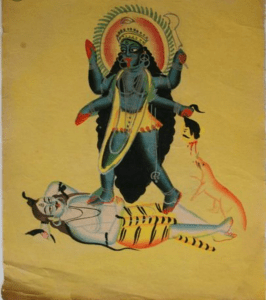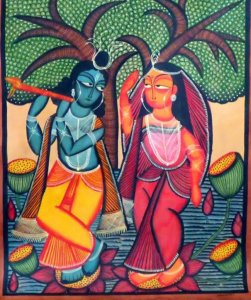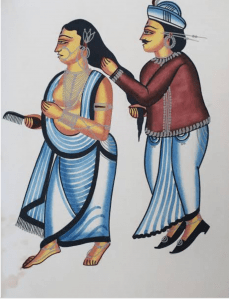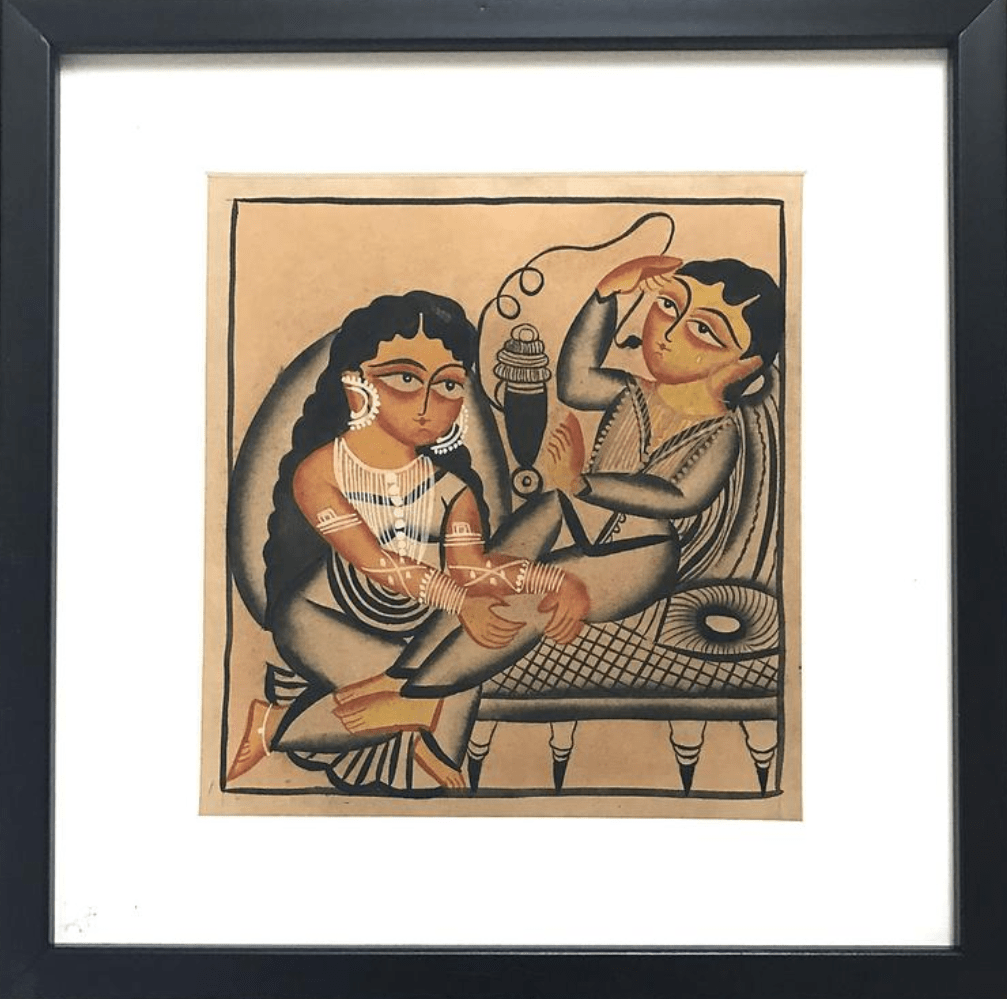Kalighat painting emerged in the 19th century of Calcutta, West Bengal, India in the vicinity of Kalighat Kali temple. Kalighat is a Hindu temple dedicated to Goddess Kali. The city name Calcutta is derived from word Kalighat. It is one of the famous Hindu temples where people from all over India visit to seek blessings of goddess Kali.
Popular Kalighat Painting
Kalighat is a school of art that was started in the 19th century in the city of Calcutta. A.N. Sarkar & C Mackay referred this school to be the first school of painting in India that is modern as well as popular.
These paintings were usually done on mill-made papers, cloth or patas. They painted using brushes and bold homemade colours. They usually painted gods and goddesses and was sold to visitors around the Kalighat Kali temple.

The villagers were the artists who painted and traveled to places with the painted scrolls singing the scenes and stories of the epic of the paintings. These artists were popularly called as ‘Patuas‘ (painters on cloth).
When the British invaded the country and established their political power they showed interest in art, music and fine arts and started institutions to discover and teach people more techniques. The Calcutta school of art was one of such schools which attracted many artists (patuas) to the city.
This way they started learning more art techniques and the part-time vocation turned into a full-time job with the growing demand increased their earnings as they started creating new forms. This is how Kalighat painting came into existence.
Kalighat school of art mainly taught two forms of painting – the Oriental and Occidental. They gained a lot of popularity with these forms. The artists mainly painted Goddess Kali, Durga, Lakshmi and Annapurna especially during Durga Puja and other big festivals. The Kalighat art is not limited to religious deities as they also painted historic characters like Rani Lakshmibai and others.

These paintings are often found to be the family business where some collected ingredients, some made homemade dyes, some drew outlines and some filled colours.
Kalighat paintings gathered the essence of daily life in a simple manner which added charm and influenced artists like Jamini Roy. These paintings have continued to be the trend even till date.

There was a traveling exhibition that took place in 2011 and 2012 of 80 Kalighat paintings toured India. Now Kalighat paintings are sold around the temple of Goddess of Kali in Calcutta, practiced by many artists and influences many artists. Today, they are found in museums and galleries all around the world.



